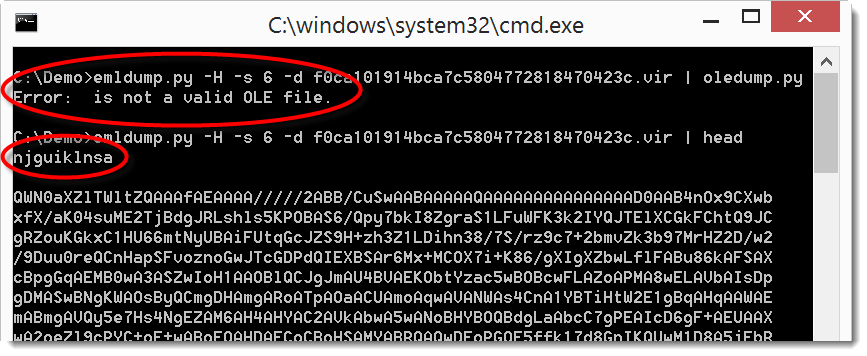
- DECODE BASE64 PYTHON MANUAL
- DECODE BASE64 PYTHON FULL
- DECODE BASE64 PYTHON CODE
- DECODE BASE64 PYTHON DOWNLOAD
"It just happens to be a malicious module.

DECODE BASE64 PYTHON CODE
"Loader scripts such as those discovered in the fshec2 package contain a minimal amount of Python code and perform a simple action: loading of a compiled Python module," the ReversingLabs researchers said.

DECODE BASE64 PYTHON FULL
In this latest incident, with a package called fshec2 that was found to contain a malicious PYC file, the full malicious payload can be hidden within the file and it's much harder to detect it if the security tool is not designed to decompile it.
DECODE BASE64 PYTHON DOWNLOAD
In most instances of PyPI malware, the malicious obfuscated code is meant to reach out to an external URL and download the malware - usually an information stealer - which is another opportunity for security tools to detect suspicious behavior. This helps with performance because it has faster execution times, and the most common use for such files is in the distribution of Python modules. Since they're already interpreted (compiled) code, they can later be executed directly by the Python interpreter without reinterpreting the original script. PYC files are generated when the Python interpreter imports or executes a Python script.

They are not human-readable like plaintext PY scripts. In one variation of the W4SP attacks, the obfuscated malicious code in the files was shifted past the edge of the default screen borders, so that someone manually reviewing the source code file wouldn't see it. The group uses some third-party open-source tools to achieve this such as pyminifier, Kramer, or Hyperion. In the PyPI ecosystem, the cybercriminals behind the W4SP Stealer malware are known for employing techniques including base64 encoding, LZMA compression, and minification - the removal of spaces and comments from code to make it more compact but also harder to read. For example, encoding malicious code in base64 is a commonly used technique, but security tools can deal with such encoding. This consists of using features of the programming language itself such as encoding, decoding, or eval to make the code unreadable yet functional. They are easy to unpack and read, and as a result security scanners for these repositories have been built to handle this type of packaging.Īttackers are in a constant battle with security companies to evade detection, and the most common evasion technique when it comes to plaintext code is obfuscation. The vast majority of the packages found on public repositories such as npm for JavaScript, PyPI for Python, and RubyGems for Ruby consist of open-source code files that are packaged into archives. "If so, it poses yet another supply-chain risk going forward, since this type of attack is likely to be missed by most security tools, which only scan Python source code (PY) files." Compiled code versus source code "It may be the first supply chain attack to take advantage of the fact that Python bytecode files can be directly executed, and it comes amid a spike in malicious submissions to the Python Package Index," researchers from security firm ReversingLabs said in a report. In one incident, researchers have found malware code hidden inside a Python bytecode (PYC) file that can be directly executed as opposed to source code files that get interpreted by the Python runtime.
DECODE BASE64 PYTHON MANUAL
Attackers who are targeting open-source package repositories like PyPI (Python Package Index) have devised a new technique for hiding their malicious code from security scanners, manual reviews, and other forms of security analysis.


 0 kommentar(er)
0 kommentar(er)
